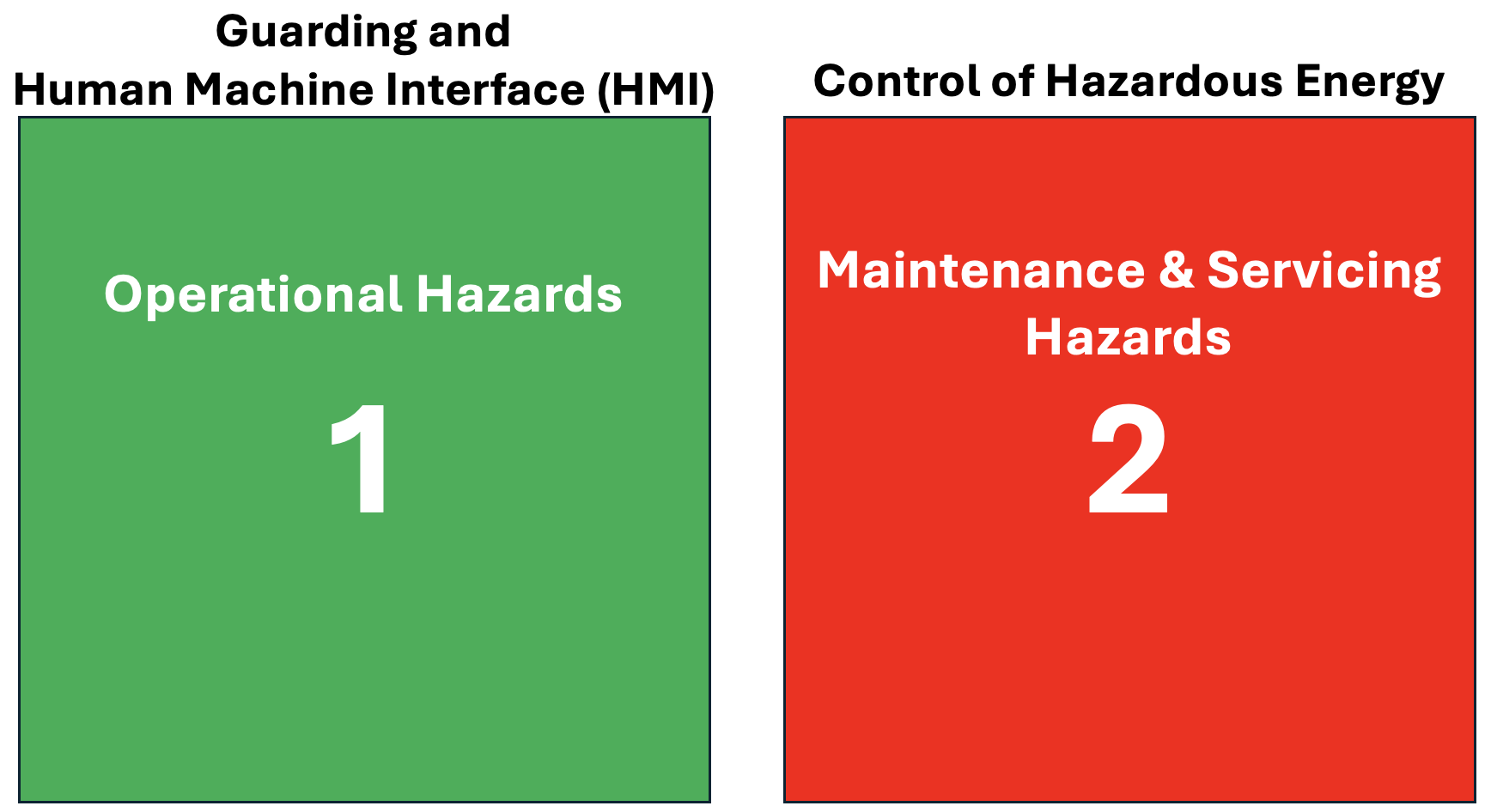 I put this image together for a friend struggling to demonstrate to their management that we can not discuss LOTO until Machine Guarding is in place. These two topics go hand in hand and trust me; if there are guarding issues, those hazards will be compounded when we attempt to frame up the LOTO program.
I put this image together for a friend struggling to demonstrate to their management that we can not discuss LOTO until Machine Guarding is in place. These two topics go hand in hand and trust me; if there are guarding issues, those hazards will be compounded when we attempt to frame up the LOTO program.
Guarding is for the OPERATIONAL safety of the machine/equipment and, if not done well, poses a big, if not bigger, risk to the workers running the machine/equipment. We routinely encounter serious guarding issues while helping clients with their LOTO efforts, and we are almost always told, "Thanks, but we just want help with LOTO."
Controlling hazardous energy sources (e.g., LOTO) during maintenance and servicing is just as critical but entirely different from guarding.
Just look at the scope/application of OSHA's 1910.147:
(emphasis by me)
|
1910.147(a)(2)(i) This standard applies to the control of energy during servicing and/or maintenance of machines and equipment.
1910.147(a)(2)(ii) Normal production operations are NOT covered by this standard (See subpart 0 of this part).
Servicing and/or maintenance which takes place during normal production operations is covered by this standard ONLY IF:
1910.147(a)(2)(ii)(A) An employee is required to remove or bypass a guard or other safety device; or
1910.147(a)(2)(ii)(B) An employee is required to place any part of his or her body into an area on a machine or piece of equipment where work is actually performed upon the material being processed (point of operation) or where an associated danger zone exists during a machine operating cycle.
|
We see this often; a poorly guarded machine rarely gets locked out for servicing/maintenance since the personnel doing the servicing/maintenance did not have to remove or bypass a guard or other safety device. The facility's LOTO program (and training) will usually use the exact wording from the standard to DEFINE when LOTO is required; so if the machine is NOT properly guarded, then the "trigger(s)" for LOTO are missing. Not to mention that the operations personnel are at serious risk of injury due to this improper guarding.
|
The Lockout/Tagout standard makes a distinction between two types of workplace activities: servicing and/or maintenance and normal production operations The Lockout/Tagout standard is intended to provide employees with protection from the unexpected energization, start up, or release of stored energy, while performing servicing and/or maintenance operations. The machine guarding standards in Subpart O are intended to provide employee protection against the hazardous energy associated with normal production operations. However, certain types of servicing and/or maintenance performed during normal production operations are also subject to the Lockout/Tagout standard. Under the Lockout/Tagout standard, normal production operations are defined as the utilization of a machine or equipment to perform its intended production function. Normal production operation is the mode in which an energized machine or equipment operates to either manufacture a product or perform a function necessary to assist in the manufacturing process. This mode of operation may present additional hazards to employees, including points of operation; e.g. ingoing nip points, crushing hazards due to the motion of the machine or equipment and due to the movement of the power transmission apparatus. The machine guarding standards establish provisions for employee protection against hazardous energy and points of operation while the equipment is energized in order to perform its intended production function. (See 29 CFR 1910.212 and 29 CFR 1910.219). Employee protection from hazardous energy during normal production operations is generally accomplished by compliance with applicable machine guarding standards. However, if a servicing or maintenance operation takes place during normal production operations, and the employee is required to remove or bypass machine guarding required by Subpart O, or to place part of his/her body into an area in which he/she is exposed to the unexpected energization or activation of the equipment, the protections of the Lockout/Tagout standard would apply. In these circumstances, the employee performing servicing or maintenance would be subjected to hazards that are not encountered as part of the normal production operation. Servicing and/or maintenance is defined as workplace activities, including installing, setting up, inspecting, adjusting, repairing, replacing, constructing, modifying, and maintaining and/or servicing machines or equipment. These activities include lubrication, cleaning or unjamming of machines or equipment, and making adjustments or tool changes, during which the employee may be exposed to the unexpected energization or startup of the equipment or release of hazardous energy. Setting up would include any work performed to prepare a machine or equipment to perform its normal production operation. Many servicing and/or maintenance activities require the machine, equipment, or its components to be disassembled or dismantled. These tasks are typically performed with the equipment stopped. Other servicing and maintenance activities would not require the employer to disassemble or dismantle the machine or equipment but would nonetheless require shutdown of the equipment or machine. This would cause the associated production process to be discontinued during the servicing and maintenance. Servicing and/or maintenance activities may expose an employee to the unexpected energization, start up, or release of stored energy. The Lockout/Tagout standard establishes provisions to deenergize equipment in such cases and to render all potentially hazardous energy safe, prior to engaging in servicing and maintenance activities. These provisions are intended to protect employees from the equipment being energized or started while servicing and/or maintenance is being performed. |













